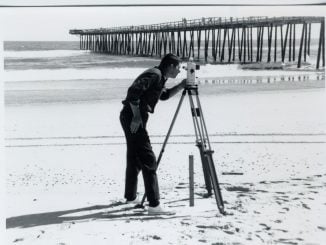
LOS ANGELES — Winter is here for cable and satellite TV operators.
American consumers are canceling traditional pay-TV service at a much faster rate than previously expected, according to research firm eMarketer.
In 2017, a total of 22.2 million U.S. adults will have cut the cord on cable, satellite or telco TV service to date — up 33% from 16.7 million in 2016 — the researcher now predicts. That’s significantly higher than eMarketer’s prior estimate of 15.4 million cord-cutters as of the end of this year. Meanwhile, the number of “cord-nevers” (consumers who have never subscribed to pay TV) will rise 5.8% this year, to 34.4 million.
“Younger audiences continue to switch to either exclusively watching video or watching them in combination with free-TV options,” said Chris Bendtsen, senior forecasting analyst at eMarketer. “Last year, even the Olympics and [the U.S.] presidential election could not prevent younger audiences from abandoning pay TV.”
Overall, 196.3 million U.S. adults will have traditional pay TV (cable, satellite or telco) this year, down 2.4% compared with 2016, eMarketer predicts. By 2021, that will drop to 181.7 million, a decline of nearly 10% from 2016. The number of pay-TV viewers 55 and older will continue to rise over the next four years, while for every other age cohort the subscriber tallies will decline.
By 2021, the number of cord-cutters will nearly equal the number of people who have never had pay TV — a total of 81 million U.S. adults. That means around 30% of American adults won’t have traditional pay TV at that point, per eMarketer’s revised forecast.
There’s a caveat on these numbers: eMarketer’s estimates for pay-TV viewers do not include “virtual” internet TV services, such as Dish Network’s Sling TV, AT&T’s DirecTV Now, Hulu’s live TV service, or YouTube TV. But industry analysts say over-the-top TV subscription services so far have not offset declines in traditional pay television. Moreover, the cheaper OTT packages typically include fewer channels, so the growth of “skinny” TV bundles implies net household losses for many cable networks.
Seeing the writing on this wall, several TV programmers have launched or are prepping direct-to-consumer streaming services themselves. CBS in 2014 launched All Access, while Disney has set early 2018 for the debut of a no-cable-needed ESPN OTT package (although that will exclude NFL and NBA games). In addition, five media companies — A+E Networks, Viacom, Discovery, Scripps Networks Interactive and AMC Networks — reportedly have joined forces to create a non-sports streaming bundle of cable programming to be priced at under $20 per month.
For the TV biz, there’s another worrisome trend: People are watching less traditional television. For the first time, in 2017 average TV viewing in the U.S. is expected to drop below 4 hours per day, eMarketer predicts.
Average time spent watching TV (excluding digital) among American adults will drop 3.1%, to 3 hours 58 minutes this year. Digital-video consumption, meanwhile, continues to climb. U.S. adults will consume 1 hour 17 minutes of digital video per day on average in 2017 (excluding time spent viewing video on social networks), up 9.3% year over year, according to eMarketer.
With the U.S. pay-TV base eroding faster than anticipated and average TV viewing time dropping, eMarketer cut its TV ad-spending forecast for 2017 by a little over $1 billion.
This year, TV advertising will increase just 0.5%, to $71.65 billion (versus the firm’s previous $72.72 billion forecast). As a result, the TV sector’s share of total U.S. media ad spending will drop to 34.9% (vs. 36.6% in 2016) and is expected to fall below 30% by 2021.
Correction: A previous version of this article incorrectly stated that 22.2 million U.S. adults were expected to cancel pay-TV service in 2017; in fact, eMarketer’s estimate represents the cumulative number of cord-cutters projected by the end of the year.



